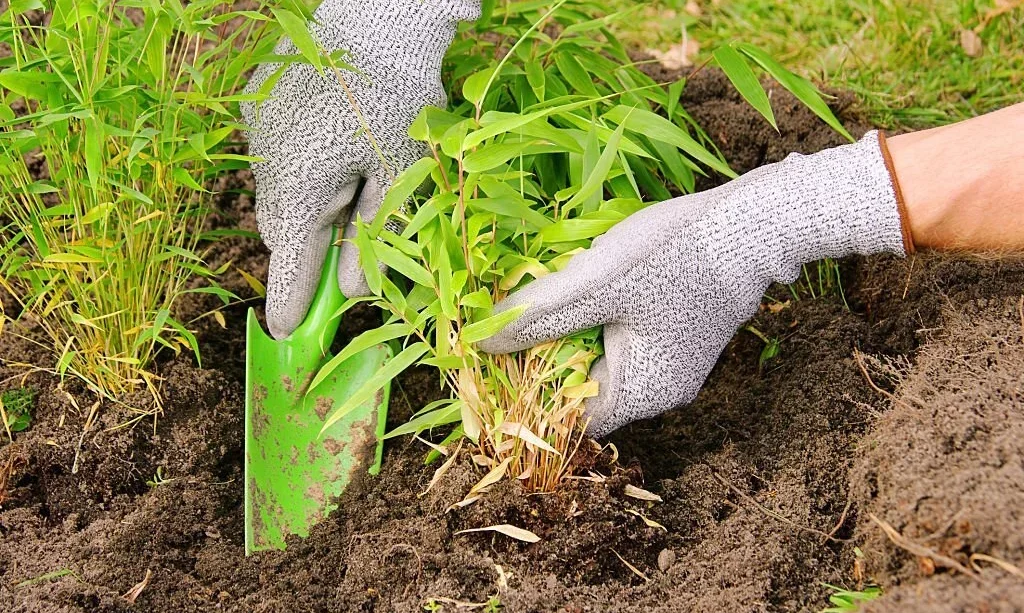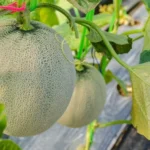If you’ve ever looked at a grove of bamboo, you’ve witnessed one of nature’s most remarkable plants. Bamboo is versatile, resilient, and incredibly fast-growing. But sometimes, like all plants, bamboo might need a change of scenery. Perhaps it’s outgrown its current spot, or maybe you’re redesigning your garden. Whatever the reason, transplanting bamboo can be a bit of a challenge, but with the right knowledge and a little patience, you can give your bamboo a fresh start in a new home. Ready to dive in? Let’s get started!
- 4qt Bag of Soil Mixture for Lucky Bamboo Plants- Our special mixture of lucky bamboo potting soil is the perfect blend for use in planting or re-potting your lucky bamboo.
- All Natural Ingredients- Features an all-natural mixture of peat, perlite, lime, and worm castings. A great combination of ingredients to encourage health and new growth.
- Ample Size for Re-Potting Lucky Bamboo from Original Container- This quantity of soil is a great size for repotting your plant from the small container lucky bamboo is often sold in at your local store or online.
- Lucky Bamboo Soil Mix- Using a specialized mixture intended for growing lucky bamboo allows your plants to not only live but thrive and grow and be happy.
- But Isn’t Luck Bamboo Grown in Pebbles?- Good question! Lucky Bamboo often has pebbles as the top dressing to make the plant more attractive on the store shelf, but below that dressing is soil! After Re-potting you can add your own pebbles to the top, or leave it without.
When to Transplant Bamboo
Timing is everything when it comes to transplanting bamboo. So, when’s the best time to do it? Well, bamboo is usually most comfortable moving house in the early spring. This gives it a full growing season to establish itself in its new location before winter arrives. Early autumn can also work, as long as there’s enough time for your bamboo to settle in before the first frost.
But seasons aren’t the only thing to consider. Look at your bamboo – is it healthy and vigorous? Transplanting can be stressful for plants, so it’s best done when your bamboo is at its strongest. If it’s not looking its best, it might be worth waiting until it’s recovered before you transplant.
Choosing the Right Location for Transplanting
Next up, where should your bamboo go? Choosing the right location is key to a successful transplant. Bamboo loves a sunny or partially shaded spot with well-draining soil. While it can tolerate many soil types, it’s happiest in slightly acidic soil rich in organic matter.
Consider the size of your bamboo, too. Some species can grow quite tall, so make sure there’s enough vertical space. And remember, bamboo loves to spread! While it can be contained with a barrier, it’s best to give it plenty of space to grow.
Lastly, think about the aesthetics. Bamboo can be a fantastic screen or backdrop, its lush greenery providing a tropical touch to any garden. Choose a spot where your bamboo not only grows well but also enhances your garden’s beauty. After all, happy bamboo equals a happy garden!
- [🐍100% Natural & Biodegradable] Grow Organiks Coconut Husk chips are cut pieces of the husk of the coconut compressed into 11 lbs.Coconut husks are a sustainable alternative to other mulches. Our Organic coco chips are best suitable for growing plants, and also perfect for reptile substrate.
- [🐍Product Specification] Compressed coco husk bricks expand up to 2 cubic feet when added with 75L of water. One 5kg block covers 12 sq. ft. at 2″ depth; 8 sq. ft at 3″ depth.Grow Organiks Coco husk chips have a life expectancy of 3-5 years while bark lasts for only 1-2 years.
- [🌷Benefits & Uses] Coco Chips can be used as a potting soil for ornamental plants by itself or can be used in combination with other porous media, to create your own special orchid mix.Coconut husk chips retain water longer than most bark.They are a good bedding ground in a terrarium. Promotes faster plant growth,consistent quality and is cheaper than bark. It is also used for fuel purposes.
- [🌷Easy use in Indoor & Outdoor] Coir husk chips are used in growing all plants, professional gardeners,Terrarium, landscaping and golf courses. The combination of a balanced pH, low natural salt content, and minimal odor makes these coconut husk chips perfect for the nurturing of all plants. It also mixes well with soil, making it great for home gardening and professional growing! It is sturdy enough to be used in landscaping and as terrarium substrate for reptiles.
- [🌷Grow Organiks Promise].Natural, guaranteed high quality without any addition of artificial colors.We stand by the quality of our products and making customers satisfied is our priority, so if you have any issue, please reach us. We will be able to help you in 24 hours.
Preparing for Transplanting
Before you start the transplanting process, it’s best to get everything ready. This will make the job easier and faster, which is important because you don’t want your bamboo out of the ground for too long. Here’s what you’ll need:
- A spade or garden fork for digging up the bamboo.
- A wheelbarrow or tarp for transporting the bamboo.
- A hose or bucket of water.
- Compost or well-rotted manure.
- Mulch.
Once you’ve gathered your tools, it’s time to prepare the new home for your bamboo. Dig a hole about twice the width and the same depth as the root ball of your bamboo. Fill the hole with water and let it drain. Then, mix some compost or manure into the soil you’ve removed from the hole. This will give your bamboo a tasty nutrient boost when it’s transplanted.
How to Transplant Bamboo
Now that everything’s ready, it’s time to move your bamboo! Start by watering your bamboo well – this will help reduce transplant shock. Then, using your spade or fork, dig a generous circle around the base of the bamboo. You want to get as much of the root ball as possible. Be careful not to damage the roots as you dig.
Once you’ve dug around the bamboo, gently lift it out of the ground. Try to keep the root ball intact. This is where your wheelbarrow or tarp comes in handy – use it to transport your bamboo to its new home without damaging it.
Place the bamboo in the hole you prepared earlier. The top of the root ball should be level with the ground. Backfill the hole with the soil-compost mix, firming it gently around the base of the bamboo. Make sure the bamboo is upright and secure.
Finally, water your transplanted bamboo thoroughly, and spread a layer of mulch around the base. This will help retain moisture and keep the roots cool. There you have it – your bamboo is now settling into its new home!
- LOW MAINTENANCE: The roots are growing in water, not soil, so simple care requirements are about light and water
- INVITE GOOD FORTUNE: Whether enjoying at a desk, coffee table, home spa or meditation space, the invite is open for positive energy and good fortune
- GREAT GIFT: Say Thank You to employees, customers, or co-workers by gifting this easy-care indoor plant.
- CAREFULLY WRAPPED: With extra attention paid to careful wrapping, this Lucky Bamboo is packaged for a safe journey
- GROWN BY EXPERTS: Experienced greenhouse growers oversee every step of production for this Lucky Bamboo
Aftercare for Transplanted Bamboo
Well done on your successful bamboo transplant! But remember, just like us after a big move, your bamboo will need some TLC to settle into its new surroundings. Keep it well-watered, especially in the first few weeks and during dry spells. It’s also a good idea to feed your bamboo with a balanced fertilizer a few weeks after transplanting, to help it recover and start growing strong.
Watch your bamboo for signs of transplant shock, like wilting or yellowing leaves. Don’t worry, this is normal. With good care, your bamboo should bounce back in no time.
- 12 month coated controlled release
- Professional grade
- High quality, high nitrogen
- Professional strength bamboo fertilizer
- 12-Month controlled release formula – One application feeds your plants for an entire year
Common Mistakes in Bamboo Transplanting
Despite our best efforts, mistakes can happen. A common mistake in bamboo transplanting is not getting enough of the root ball when digging up the bamboo. This can stress the bamboo and slow down its recovery. So always aim to get as much of the root ball as possible.
Another mistake is not watering enough after transplanting. Remember, your bamboo has just had a major upheaval, and it needs plenty of water to recover and start growing new roots.
Finally, don’t forget to consider the size and spreading habit of your bamboo when choosing its new location. A common error is planting bamboo too close to buildings or boundaries, where it can cause problems as it grows.
Conclusion
Transplanting bamboo may seem daunting, but with the right preparation and care, you can successfully move your bamboo and give it a fresh start in a new home. It’s a testament to the resilience of bamboo that it can handle such a move and bounce back with vigor. So don’t be afraid to give it a try. Your bamboo, and your garden, will thank you!







